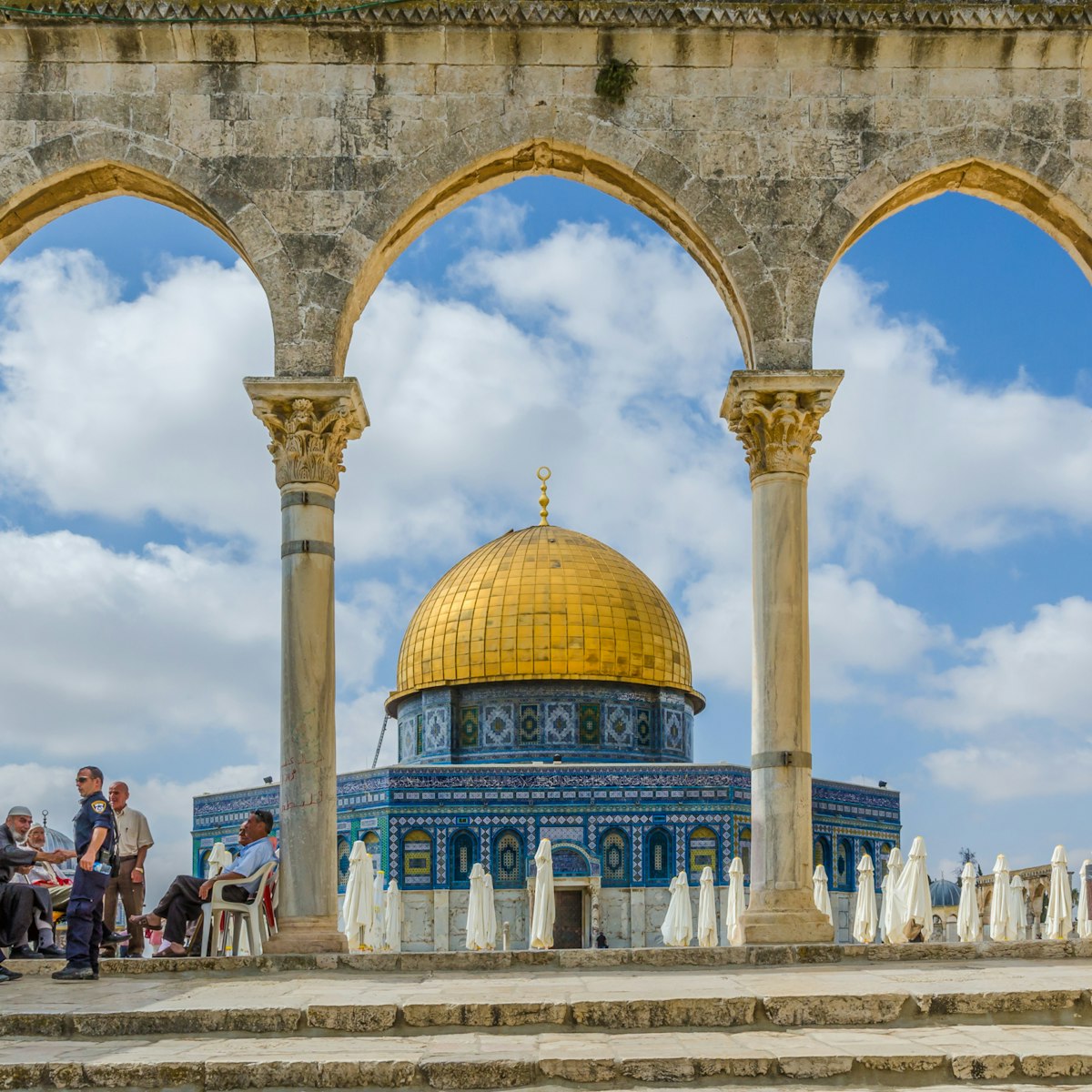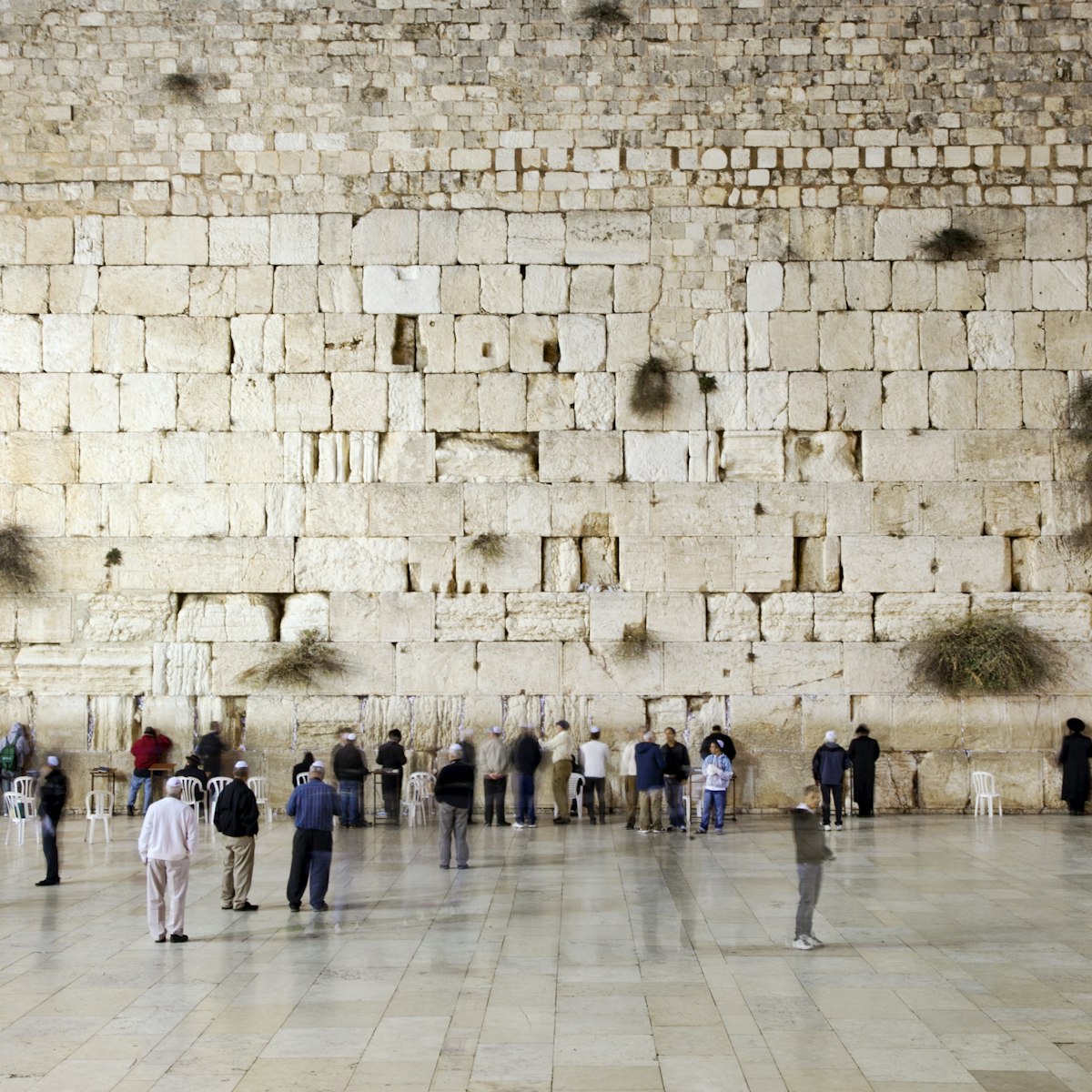For the millions of pilgrims who descend on the Holy Land every year, the Church of the Nativity is the main reason for visiting Bethlehem. The church, believed to be built on the spot where Jesus was born, was originally commissioned in 326 CE by Emperor Constantine and has seen innumerable transformations since. A restoration project is underway to preserve the building.
To really get the most out of a visit, negotiate a price from one of the handful of tour guides you’ll find milling about outside.
You'll have to duck to get through the tiny Ottoman-era door into the church, aptly named the Door of Humility. Originally the entrance was much larger, but the Crusaders reduced its size to prevent attackers from riding in on horseback. Later, either during the Mamluk or Ottoman periods, it was made even smaller, and you can still see the outline of the original 6th-century doorway and, within it, the Crusader-era arch.
Walking from the door towards the nave, it is possible to look through wooden trapdoors at Constantine’s original 4th-century mosaic floor, rediscovered in 1934.
In the 6th century, the church was rebuilt almost entirely by Emperor Justinian, after the majority of it was destroyed in a Samaritan revolt. The mammoth red-and-white limestone columns that still grace the nave are probably the only surviving remnants of the original structure. Some of them are decorated with frescoes of saints, painted by Crusaders in the 12th century. To the right of the Door of Humility, a doorway leads to the Armenian Monastery, these days housing just six monks to service the needs of Bethlehem’s 300-strong Armenian congregation. The Armenians flourished during the 1600s, when they were noted for their transcribed and illuminated versions of the Bible.
At the front of the nave, descend the stairs to enter the Grotto of the Nativity. It’s popular with tour groups, but if you time your visit over lunchtime midweek, you’ll likely have the grotto entirely to yourself (on a weekend you may have to stand in line for an hour or more). There is a rather zealous security guard who has been known to physically remove pilgrims whom he thinks are staying too long.
Atmospherically lantern-lit and redolent with mystery, a 14-pointed silver star marks the spot where Jesus is said to have been born. The Chapel of the Manger (‘the Crib’) to one side of the grotto represents the scene of the nativity, while the chapel facing it houses the Altar of the Adoration of the Magi, which commemorates the visit of Caspar, Balthazar and Melchior. The Persians spared the church and grotto when they sacked Palestine in 614 CE, ostensibly because they saw a depiction of the magi in their own native costume.
Though all might seem serene down here, conflict has actually rocked this cradle for ages. The 14-pointed star was stolen in 1847, each of the three Christian communities in residence (Greek Orthodox, Armenians and Catholics, who have bitterly and ceaselessly fought for custodianship of the grotto) blaming the others. A copy was subsequently supplied to replace it, but the fights didn’t end there, and administrative domination of the church changed hands repeatedly between the Orthodox and Catholics.
To this day, management of the church is divvied up metre by metre between the Orthodox, Catholic and Armenian clerics (this system of management for holy places is known as the ‘status quo’). Take the grotto lanterns, for example: six belong to the Greek Orthodox, five to the Armenians and four to the Catholics.








